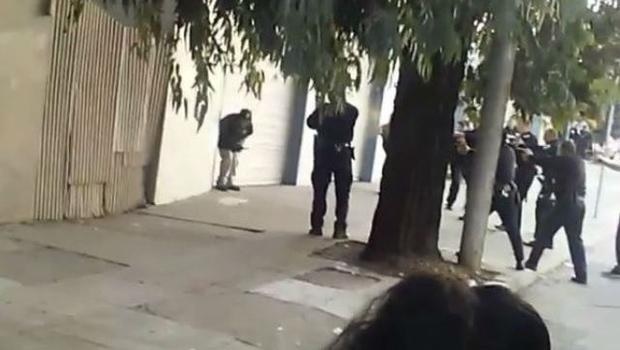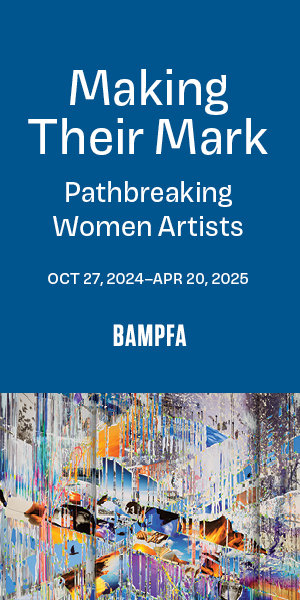The Police Commission meeting tomorrow (Wed/13) includes an item that hasn’t gotten much attention – but maybe ought to be the focus of a little more interest. It’s Item 7(a), which reads as follows:
Pursuant to Government Code Section 54957(b)(1) and San Francisco Administrative Code Section 67.10(b) and Penal Code Section 832.7: (Possible Action) PUBLIC EMPLOYEE PERFORMANCE EVALUATION: Chief of Police Gregory P. Suhr
Yeah: While lots of activists are out there calling on the mayor to fire the chief, the Police Commission will be giving him a job review. And when that happens, there are a few things that maybe ought to be up for discussion.
Let’s look at what’s happened just over the past few weeks of Chief Suhr’s tenure:
— The department has confirmed that the scandal over racist and homophobic texting by officers was not limited to one case but is apparently more widespread. Hundreds more criminal cases may have to be reviewed, and charges may end up getting dismissed, much as happened in the last round of racist comments.
— A new Chronicle report showed that SF cops searched Black and Latino drivers at higher rates after traffic stops.
— Officers shot and killed a homeless man less than 30 seconds after confronting him, and some witnesses said he was no threat to anyone.
— Then the SFPD released only selected witness statements, bolstering the case of the cops but not presenting the full story.
— The ACLU of Northern California called on the US Justice Department to conduct a more full and detailed investigation of the SFPD after the latest round of racist text suggest that the voluntary audit the feds are doing is nowhere near enough.
— The police union, the SFPOA, is acting as if it runs the shop, saying that the chief and the command staff “need to remember where they come from and stop being puppets.”
— The chief is giving out either wrong information – his blow-up picture of the Woods shooting, which incorrectly implied that Woods was raising his arm, when in fact, that frame came after Woods was shot – or giving out no information at all. In both the Mario Woods case and the Luis Gongora case, Suhr made public statements defending the officers involved – long before all the evidence was in.
— Oh, and there’s more. Suhr, who is an employee of the City and County of San Francisco, gave a blurb under his name and title endorsing the private security service run by former POA chief Gary Delagnes.
There are, to say the least, some issues here.
Plenty of people support Suhr, including some progressives who say that at least he is acknowledging the problems – and that firing him won’t magically bring in someone a whole lot better. I get that. But he’s the guy in charge at a time when the department is in a pretty much full meltdown, and if the commission wants to review his performance, the members ought to be asking some serious questions.
And one would think they might want to report back to the public that they are demanding action on a lot of changes.
Suhr (sometimes properly) talks about how there need to be policy changes. But there’s a much larger issue here: Policy changes mean nothing if the existing policies aren’t enforced, and officers and command staff are allowed to violate the rules with impunity. You can order Tasers and set rules for their use; you can rewrite policies on use of force and how to handle mentally ill people. It can sound good on paper.
But we already have a lot of policies on paper that are ignored, and until those rules are enforced, who is going to believe that new policies will make any difference? Based on current practice, the new rules would be ignored, too.
Let’s look at the Mario Woods situation and the Gongora case entirely on the basis of existing policy, the rules that were in place when those shootings happened.
Here is the current standard for the use of a firearm, from the Department’s General Order 5.01. In order to shoot someone, an officer must have
(1) a reasonable belief that the person poses
(2) an imminent danger [emphasis mine] of
(3) death or serious bodily injury
You need all three for the shooting to be legit.
The implication here is that the individual needed to be posing a serious threat before the actions of the officers made things worse. In other words, if Woods or Gongora were simply holding a knife – and not threatening anyone with it – there would be, at the time the officers arrived on scene, no imminent danger.
Then there’s the overall use of force rule, which includes the following:
(a) “the use of physical force shall be restricted to . . . the degree minimally necessary.”
(b) “force may not be resorted to unless other reasonable alternatives have been exhausted or would clearly be ineffective under the particular circumstances.”
(c) “officers shall, to the extent possible, utilizing an escalating scale of options (starting with verbal persuasion and ending with shooting bullets) and not employ more forceful measures unless it is determined that a lower level of force would not be adequate, or such a level of force is actually attempted and found to be inadequate.”
(d) “good judgement and the circumstances of each situation will dictate the level (of force) at which an officer will start.”
Again: When the officers arrive on the scene, unless there is an imminent threat – that is, someone aiming a gun at someone else, someone with a knife threatening to kill someone else, that sort of thing – the current rules, the ones every officer is supposed to follow right now, require that every option that doesn’t include force be tried first.
There was, according to all currently available evidence, no reason for anyone to believe that either Woods or Gongora was about to harm anyone else. Woods, the tape clearly shows, wasn’t threatening himself or others when the officers arrived. We don’t have direct camera evidence of Gongora, but if the officers observed him about to stab someone with that knife, they wouldn’t have started with bean-bag rounds.
No: In both cases, the officers came onto the scene where someone with a knife was holding that weapon, but not imminently threatening anyone else.
However, because the officers quickly (in the case of Gongora, in the space of less than 30 seconds) escalated the situation – instead of following the existing rules – a suspect who was no threat was turned into what the cops said was a threat.
Now: In the Woods video, it’s pretty clear that he wasn’t actually threatening anyone, then the cops could have stepped back and done nothing and waited for help and nobody would be dead. In the Gongora case, even if we assume the officers are telling the truth, he only became a threat after they arrived on scene and started firing beanbags at him.
Remember, Gongora spoke little or no English, and likely had no idea why he was suddenly coming under fire from projectiles.
In fact, bean-bag guns are only good at fairly close range, generally less than 20 feet – so in effect the officers had to decide to move close enough that Gongora could attack them before the fired those non-lethal rounds. Was there a threat before they created one?
Under current rules, you can’t create a crisis that requires lethal force and then kill someone. It’s up to the officers to try to de-escalate first.
So even if the police story is completely true in the Gongora case, and even if what Suhr has said (contradicted by video evidence) were accurate in the Woods case, there’s at least a reasonable case to be made that the officers violated existing policy.
Yes, Suhr is right, we can have better training and better policies. None of it matters if there is no accountability.
Which brings us back to the chief’s job review.
When you have a department in crisis, and the chief exec is up for a performance review, it’s not enough to say that there are changes needed in policy. He’s had plenty of time to push for policy changes. In the meantime, there is no evidence that he has held officers accountable for the existing rules.
At a certain point you have to say: What are you, the boss, going to do right now, to get things under control again?
Because Out of Control is a pretty fair definition of the SFPD today. If the commissioners don’t get that, they are way, way, out of touch.




